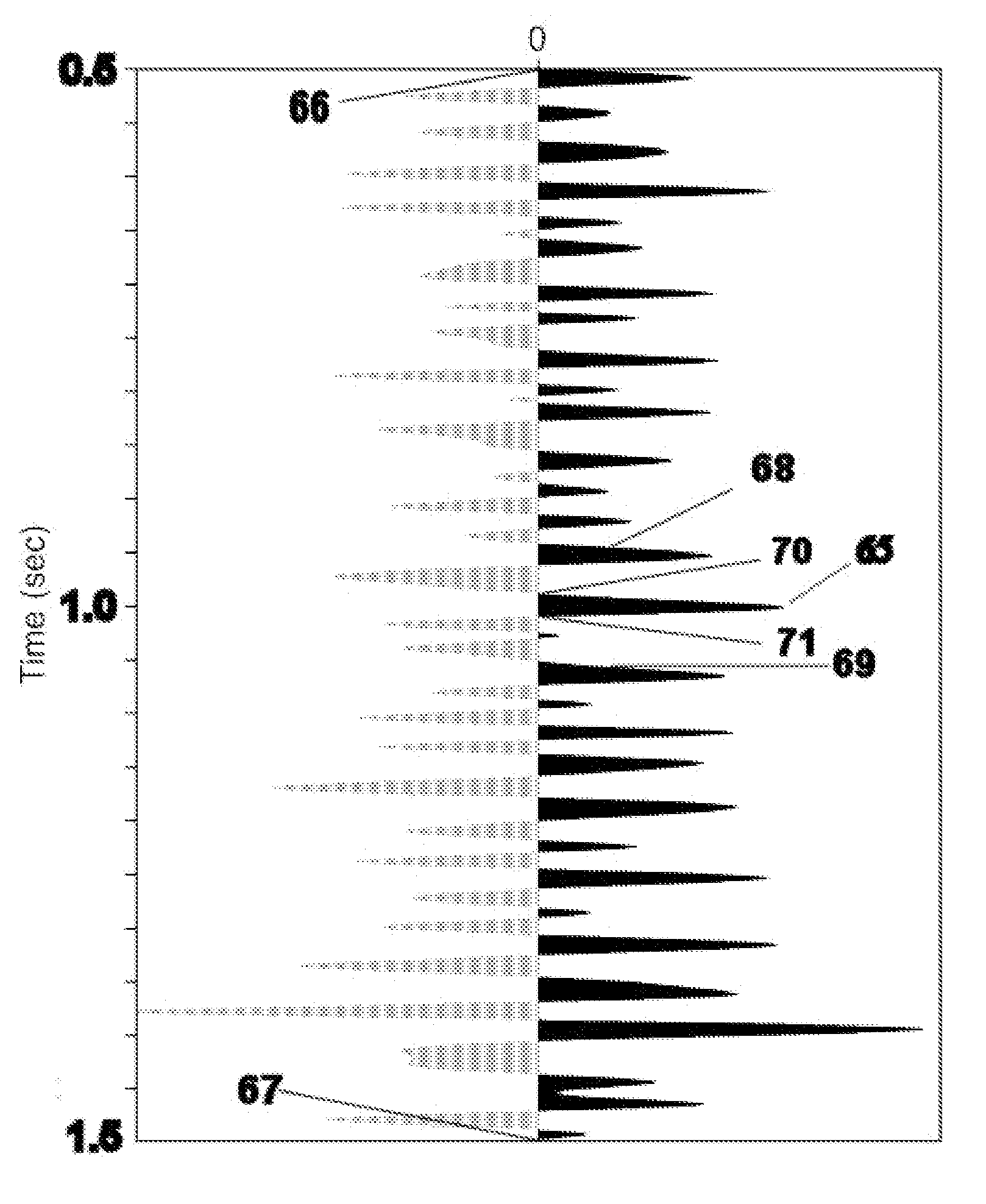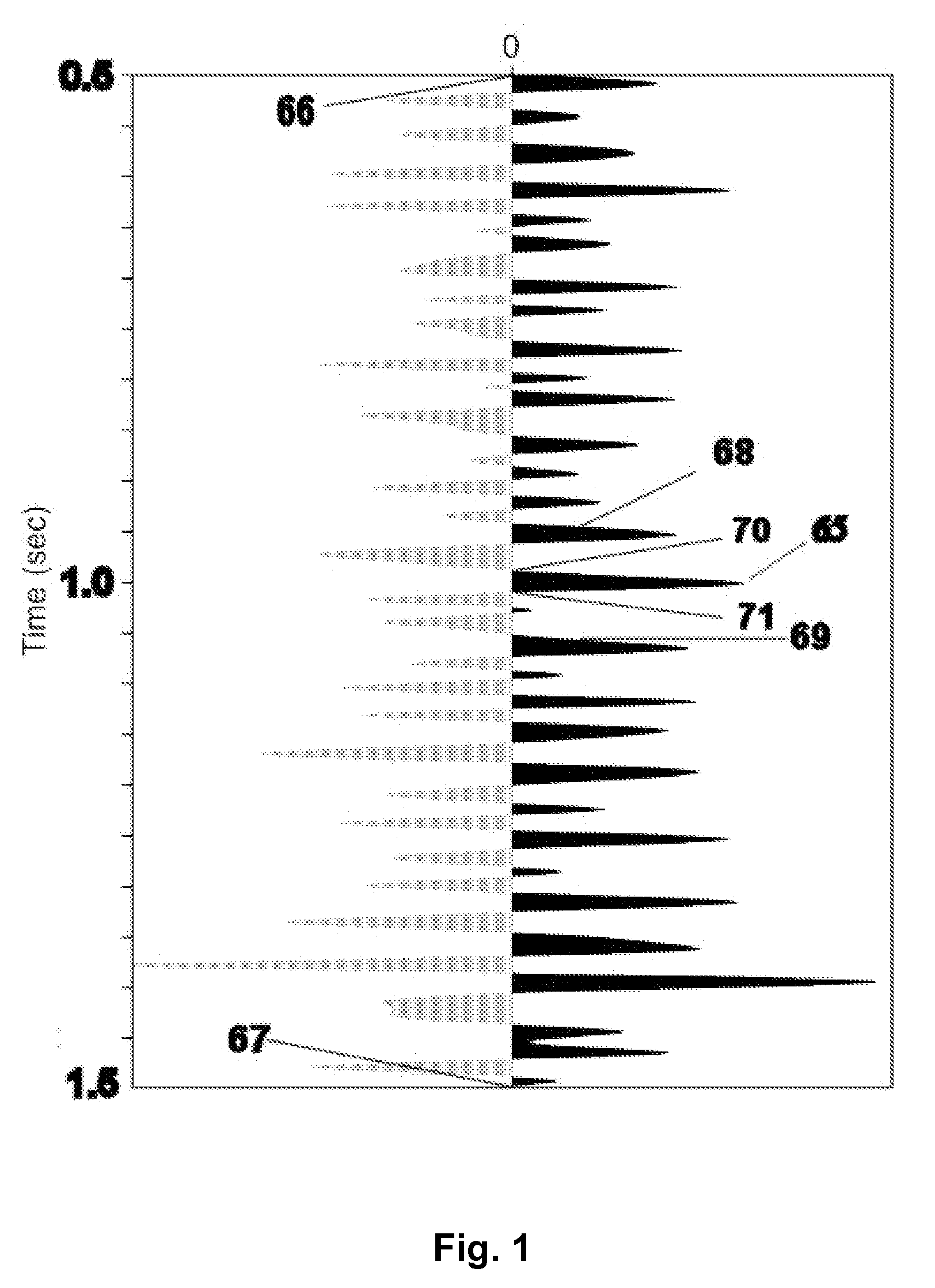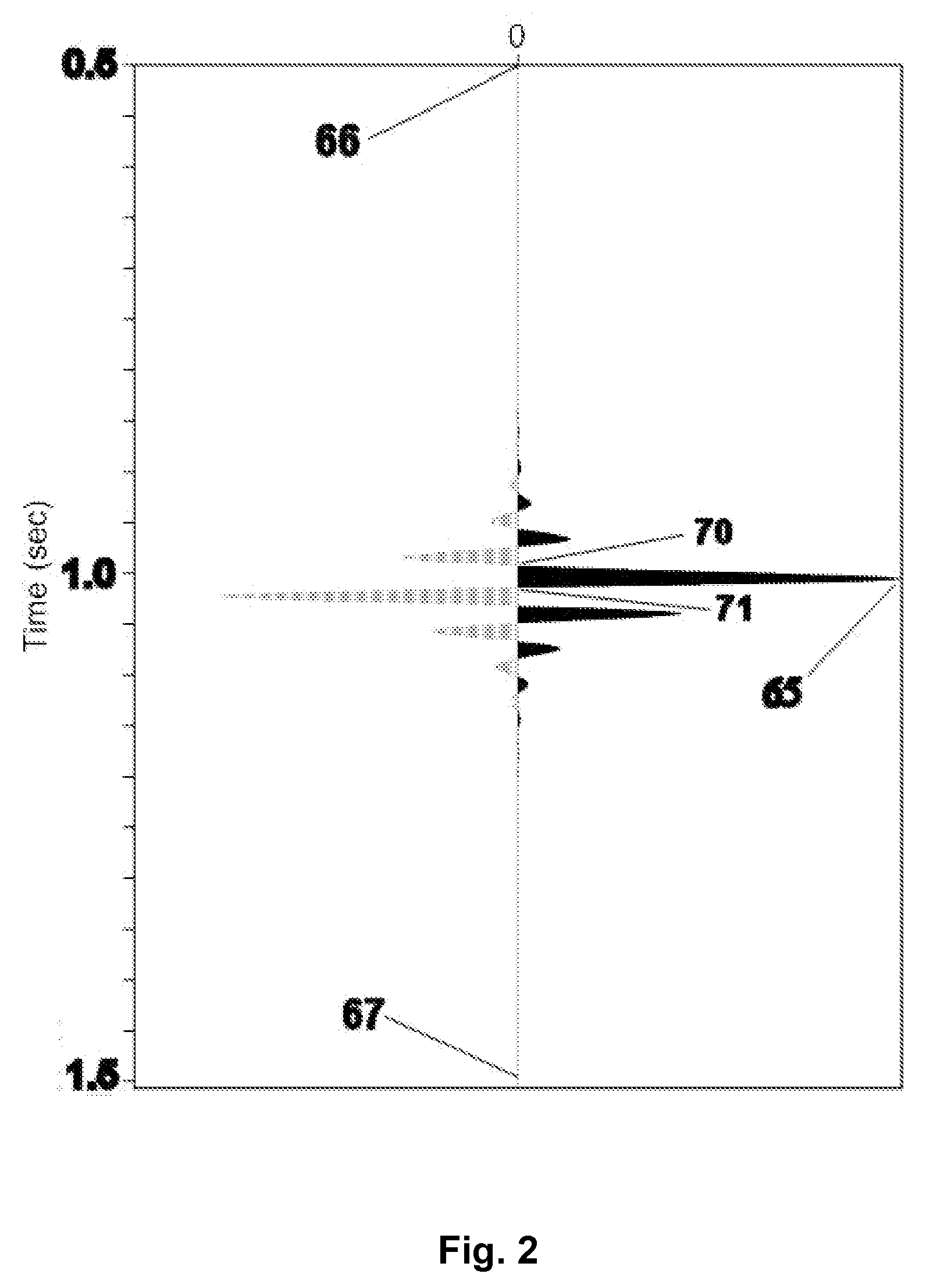Time-Space Varying Spectra for Seismic Processing
a time-space varying spectra and seismic processing technology, applied in the field of single-or-multi-channel nonstationary waveform processing, can solve the problems of uneven time delay in the alignment of reflected signals from trace to trace, poor frequency resolution of fft of short duration (“window”) signals, and varies time delay between coherent signals. , to achieve the effect of poor frequency resolution, poor frequency resolution, and reduced gibbs side lobes
- Summary
- Abstract
- Description
- Claims
- Application Information
AI Technical Summary
Benefits of technology
Problems solved by technology
Method used
Image
Examples
Embodiment Construction
A—Time-Frequency Spectra
[0077]While prior-art methods of spectral analysis manipulate a short data window to obtain a spectrum, the method of this invention “un-windows” the short window then performs standard fast Fourier transform (“FFT”) on the data. The key concept of the invention is to extrapolate the portion of the signal in the short window into a signal spread over a longer window. In doing so, a continuity relationship among data within and outside of the short window is used. Consequently, the long-window comprises original data present in the short-window plus its extrapolation that is not a tapered version of the original data in the long-window. However, the extrapolation depends on the continuity model and its parameters. Different choices of the model and the parameters will produce different FFT outputs. As a result, the method of this invention produces a FFT estimate and not the exact FFT, which as stated in the Background section will have poor frequency resoluti...
PUM
 Login to View More
Login to View More Abstract
Description
Claims
Application Information
 Login to View More
Login to View More - R&D
- Intellectual Property
- Life Sciences
- Materials
- Tech Scout
- Unparalleled Data Quality
- Higher Quality Content
- 60% Fewer Hallucinations
Browse by: Latest US Patents, China's latest patents, Technical Efficacy Thesaurus, Application Domain, Technology Topic, Popular Technical Reports.
© 2025 PatSnap. All rights reserved.Legal|Privacy policy|Modern Slavery Act Transparency Statement|Sitemap|About US| Contact US: help@patsnap.com



